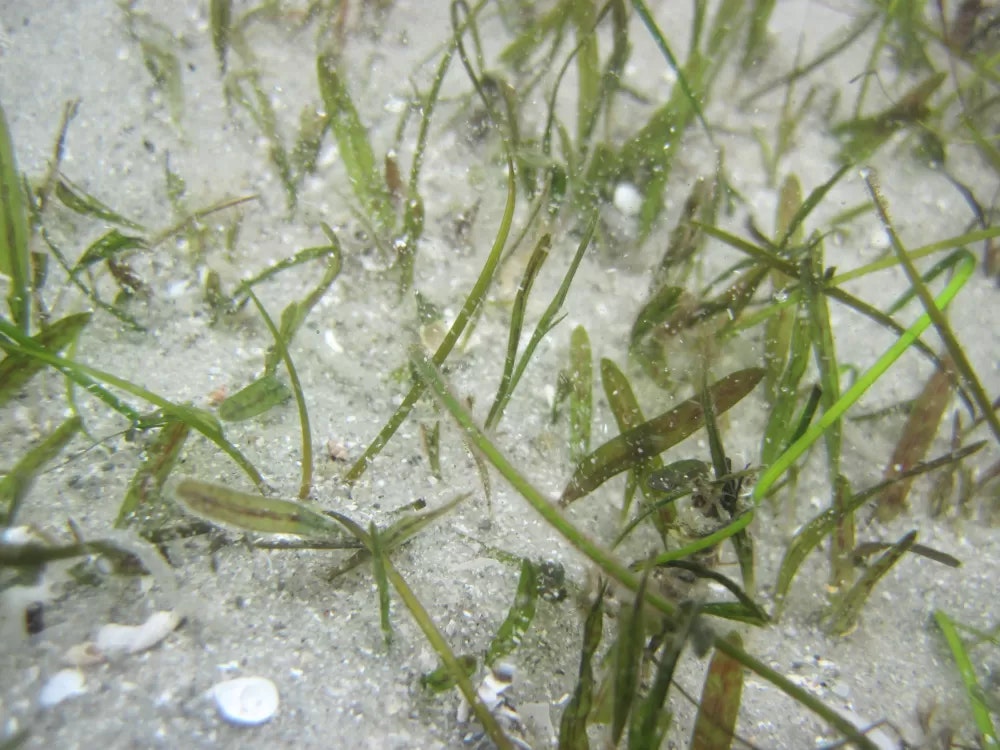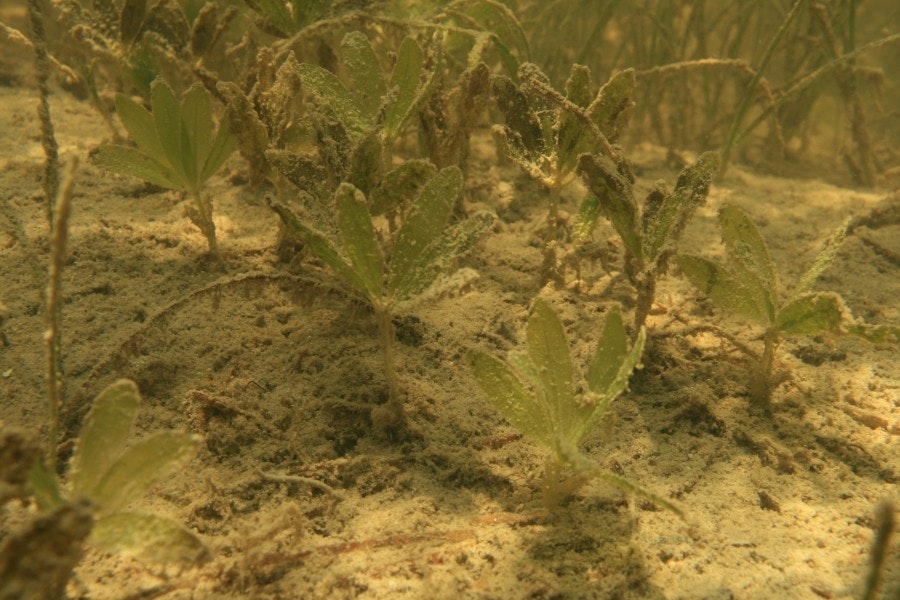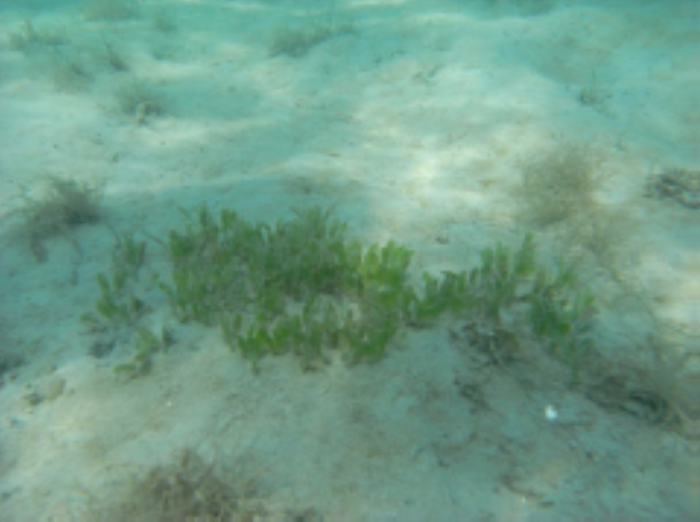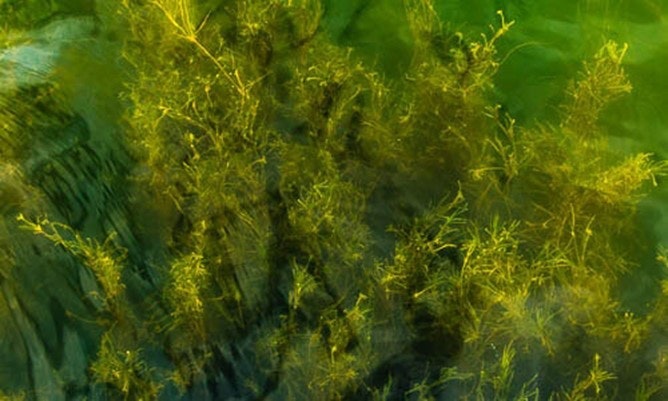The seven seagrass species of the Indian River Lagoon
About our seagrasses
Seagrasses are flowering, saltwater plants that live in the shallow areas of an estuarine system. They not only act as a nursery and food source for juvenile fish, shellfish and manatees, but also improve water quality by trapping and removing sediment and nutrients suspended in the water column. Seagrass roots and rhizomes stabilize sediment in the lagoon bed, and established beds help protect shorelines and limit erosion. The drift algae collected within the seagrass is an important component in organism habitat and the collection of nutrients within the lagoon.

Johnson’s seagrass (Halophila johnsonii) is only found in the southern half of the lagoon. Johnson’s seagrass is short, one to two inches long, with paired leaves originating from a single rhizome. It can form dense patches and is found in both shallow and deeper water. (photo courtesy of Lori Morris, St. Johns River Water Management District)

Star grass (Halophila engelmannii) is generally more common in the northern lagoon and grows at a range of depths, sometimes in mixed beds with other species.

Shoal grass (Halodule wrightii) is the most common of seagrasses. Most abundant in shallow water (less than 6.5 feet) and it tolerates a range of salinities. It grows to between 4-10 inches. Shoal grass is considered a pioneer species because it can grow and spread quickly to stabilize the sediment. This file is licensed under the Creative Commons Attribution-Share Alike 4.0 International license.Attribution: © Hans Hillewaert

Manatee grass (Syringodium filiforme) is found at mid-depths (5-feet) throughout the lagoon and can grow to lengths of 14 inches. It is rarely found in shallow water and is often in mixed beds with other species. Photo by James St. John.

Turtle grass (Thalassia testudinum) can be found in the southern half of the lagoon at mid-depths with flat, ribbon-like blades that grow to 14 inches long and ½ inch wide. Thalassia has the highest requirement for light of all the seagrasses in the lagoon and is an excellent indicator of healthy, stable water quality.

Paddle grass (Halophila decipiens) is the only species in the lagoon that is annual where blades are lost in cold weather and reemerge in warm weather. It is generally found in deeper water and is most abundant at the southern end of the lagoon.

Widgeon grass (Ruppia maritima) grows in patches in very shallow water (less than 1 foot) and can be found in areas with low salinity.
